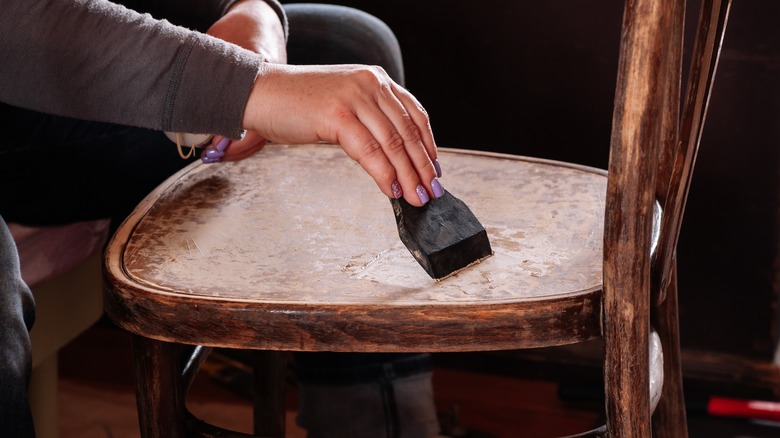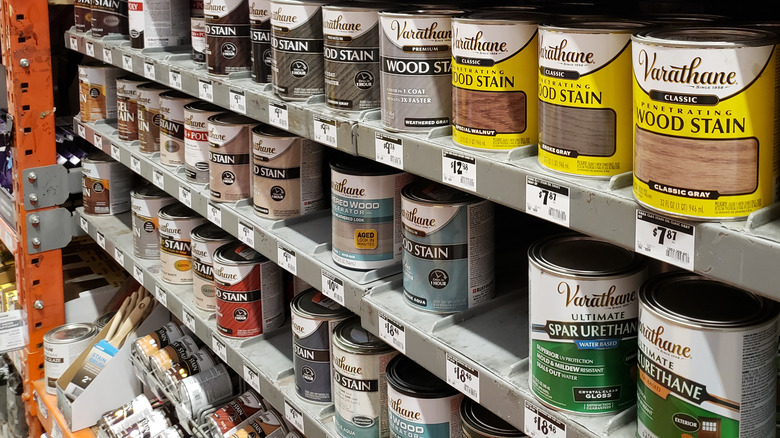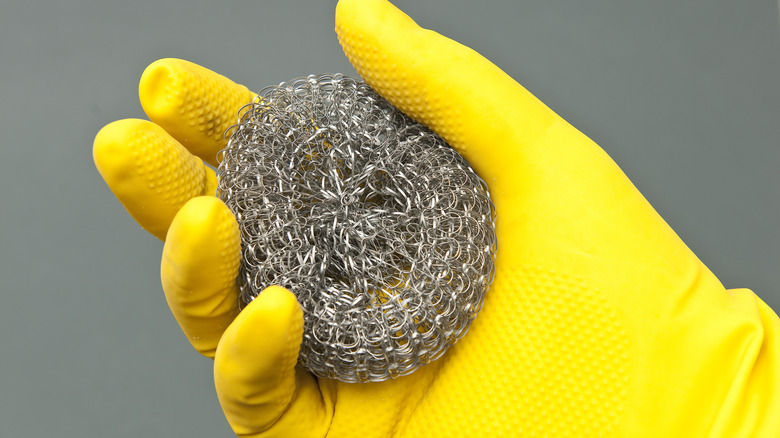How To Transform Your Wooden Surfaces To Vintage Chic In Minutes
We may receive a commission on purchases made from links.
Many people go to flea markets or antique malls in search of wood furniture with a perfectly weathered appearance, which adds a stunning level of vintage charm and rustic appeal to your decor. However, that can sometimes speak to the integrity of the wood itself if it's heavily weathered. It can also be hard to track down a vintage piece perfectly tailored to your specific needs.
Instead of hunting for months for the perfect vintage wood piece of furniture, consider instead bringing the vintage charm to existing pieces of wood furniture you already have. The reason aged wood looks the way it does is due to a process called oxidation. This is the result of prolonged sunlight and oxygen exposure, which will naturally change the color and texture of the wood grain. Weather changes, like heat, cold, moisture, and rain, can also change the appearance of wood, but oxidation is a much easier process to replicate.
Pre-mixed wood accelerators
Oxidizing wood can be achieved in a few ways. One way is with a wood accelerator stain, which imitates the oxidation and aging process. They come in a few different final colors, like this weathered gray one from Varathane, available on Amazon for $19. If you prefer a more rustic brown shade, Varathane also has an aged wood finish, also available on Amazon for $17. For this method, all you have to do is paint it onto unfinished wood, and after an hour, you'll have perfectly weathered or aged wood furniture.
The benefits of pre-mixed and formulated stains include being ready to use and much more convenient than DIY methods. If you're impatient or aren't particularly skilled at mixing your own stains or wood accelerators, these products offer a much more solid guarantee. However, if you're working on a lot of wood projects at once, it can quickly add up in price.
Steel wool and vinegar method
If you want to get crafty, you can also make a DIY wood accelerator. All you'll need is steel wool and white distilled vinegar. This method is definitely cheaper, but keep in mind that the results will likely vary from each wood type, the ratio you use, how long the mixture sits, and a list of other variables.
Start by washing a bag of steel wool with soap and water to remove any oils, then add it to a mason jar. Next, fill the jar with white distilled vinegar. If you want to ensure the steel wool properly absorbs the vinegar, break it into chunks. Do this in a ventilated area, preferably outdoors, with a clear forecast for the next few days. The mason jar can't be covered, as it needs to off-gas, and it shouldn't be kept inside.
The vinegar and steel will begin the oxidation process in the mason jar. The longer you leave it, the darker the stain effect will be on your wood. Generally, you should let it sit for at least 24 hours but no longer than four days. Make sure the wood you're working with is smooth or sanded. If you want, you can pre-stain it with coffee or black tea for a richer final look. Then, filter out the steel wool and paint it onto the wood, which will immediately change color. Sand between coats, and seal the wood when you're done.


